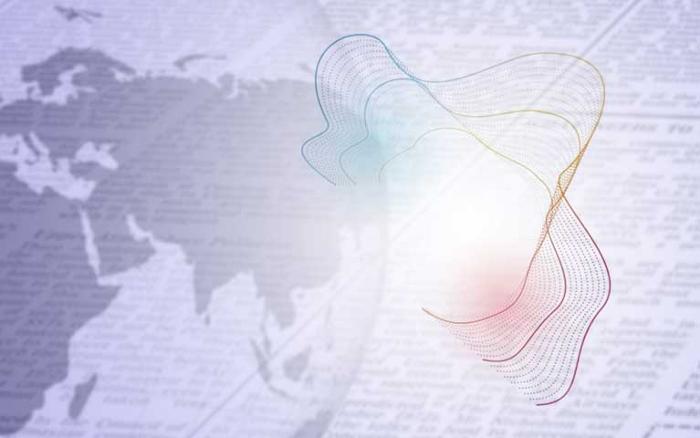

Manuel Gallardo (Atecyr): Innovation in hospital ventilation has accelerated in recent years
In this interview, Manuel Gallardo Salazar, Vice-President of the Spanish Association of Air Conditioning and Refrigeration Technicians (Atecyr), and member of its technical committee, tells us how ventilation in hospitals is a crucial factor in ensuring the safety and well-being of patients and healthcare workers. He also reveals the main strategies for optimising air quality by combining technological advances with good operating practices.
Just how important is ventilation in hospitals?
Ventilation in hospitals is a crucial factor in ensuring the safety and well-being of both patients and staff. It is not only about providing clean air, but also about controlling that air quality by mitigating pollutants, regulating temperature and humidity, and controlling the differential pressure between different areas. Adequate ventilation prevents infection and maintains aseptic environments in critical spaces such as operating theatres, intensive care units and isolation wards.
What do the regulations say in this respect?
Regulation in this area is extensive and varies from country to country. There are European regulations such as UNE 100713:2005 in Spain, NF S90-351 in France or DIN 1946-4 in Germany, as well as international guidelines such as ASHRAE 170 in the United States. These regulations set rigorous standards for hospital ventilation systems, but their constant evolution forces professionals to continuously update their training to ensure that the techniques and technologies applied do not become obsolete.
How can air quality in hospitals be improved?
Air quality in hospitals can be optimised through various strategies, combining technological advances with good operational practices. Among the most important are advanced filtration systems; differential pressure control; automation and real-time monitoring; optimisation using artificial intelligence; predictive maintenance; energy recovery and sustainability; continuous training of technical staff; and the awareness of managers and owners.
The use of HEPA and ULPA filters in critical areas enables the removal of microscopic particles, including viruses and bacteria. Maintaining positive pressure levels in operating theatres and clean rooms, and negative pressure levels in isolation areas for infectious patients, prevents the spread of contaminants. The incorporation of advanced control systems and sensors allows for continuous monitoring of temperature, humidity, CO₂ level and air quality. These systems generate alerts and allow automatic adjustments in real time to maintain optimal conditions and reduce energy consumption.
Artificial intelligence (AI) systems can analyse real-time and historical data to adjust ventilation flow rates and treatment according to occupancy levels, improving energy efficiency without compromising safety. Furthermore, thanks to the integration of control systems and their necessary rapid evolution made possible by AI, failures in air conditioning and ventilation systems can be anticipated, reducing the risk of breakdowns and optimising resources, while also improving the energy performance of hospital buildings.
Implementing heat recovery and energy efficiency strategies can reduce consumption without compromising air quality, a crucial factor for hospitals that operate 24/7. Also, given the rapid evolution of regulations and technologies, it is essential that professionals in the sector receive regular training to adapt to new standards and ensure the correct functioning of the systems. Finally, we have been through a pandemic, where the importance of air quality in the sector was highlighted. However, in the face of that fear, the administrations have not assessed the real state of the ventilation and air conditioning systems in healthcare facilities in order to establish an improvement and adaptation plan. They must do so and other owners of existing healthcare facilities should do likewise.
What are the latest trends in terms of safety in these environments?
Innovation in hospital ventilation has accelerated in recent years, driven by the need to improve safety in healthcare environments. Some of the main trends include ventilation systems with AI and machine learning, which allow air conditioning to be adjusted based on usage patterns, predicting air demand in different areas and optimising ventilation flows in real time; IoT sensors for air quality monitoring, which provide continuous measurements and issue alerts when deviations from regulatory parameters are detected. And active air purification, with technologies like bipolar ionisation, ultraviolet light (UV-C) and photocatalytic oxidation which are gaining prominence as complementary systems to reduce microbial load in hospital environments. These technologies are not covered by the RITE (Spanish Thermal Installation in Buildings Regulation).
Another trend is one of constantly evolving regulations. A fast-moving international regulatory environment requires designers and installers to keep up to date with the latest changes to ensure their projects meet the most stringent requirements. The same goes for energy efficiency and sustainability. With the rise of near-zero energy buildings (nZEB), strategies that combine renewable energy with heat recovery systems are being implemented to make hospitals more sustainable without compromising air quality.
What other factors help improve air quality in hospitals?
It's important to understand that hospital air quality is a constantly evolving field. It is not only about installing advanced technology, but also about designing spaces correctly, planning the air flow and ensuring that regulations are implemented correctly. The role of sensor technology and artificial intelligence in air quality management is also becoming increasingly important. The ability to analyse large volumes of data in real time and make automatic adjustments is transforming the way hospitals are designed and operated. In addition, the adoption of predictive maintenance strategies improves safety and operational efficiency.
Finally, international collaboration is also crucial in this area. With regulations varying from one country to the next, practitioners must be aware of global best practices and adapt their projects to new technological and regulatory challenges. Hospital ventilation is not only a technical component, but a crucial factor for the health and safety and efficiency of healthcare facilities.
In this regard, “DTIE 1.08 Air Quality in Hospitals,” the technical document published by Atecyr, describes the different hospital areas and zones, as well as the most frequent techniques and technologies to meet the regulatory requirements described above. Great emphasis is placed on required ventilation levels, as well as filtration and purification requirements and differential pressure control in the zones. The techniques and technologies described are the best available today, and have been developed on the basis of energy efficiency and available resources.
The document contains a detailed table, differentiated by the different hospital areas (sterilisation, hospitalisation, surgical block, delivery, ICU, dialysis, emergencies, radiology, pharmacy, laboratories, nuclear medicine, etc.) summarising all the recommendations proposed by Atecyr for compliance with the different regulations described above, These recommended values are based on variable including temperature range, humidity, monitoring level, renovations, ventilation, use or non-use of air recirculation, filtration stages, emergency energy supply, lighting level and the regulation and IP of the lighting installation.




